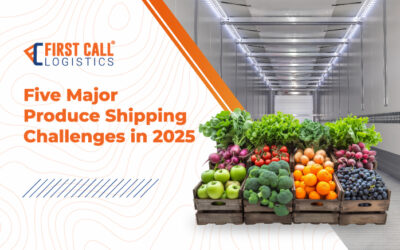Sprinter Van Transportation Services
Down to the Last Mile: FCL Sprinter Network
In this ongoing hunt for the optimal delivery model, fleets of regional sprinter vans have emerged as cost-effective options for ensuring individual items reach their end users on time.
Sprinter vans are less than half the size of your average dry van or flatbed truck, and thus don’t require a commercial driver’s license to operate. They’re also a cheaper financial investment than a full-size truck, yet they boast enormous flexibility for delivering small everyday products. These factors contribute to a growing class of regional drivers and businesses operating sprinter vans (also referred to as cargo vans), carrying LTL deliveries and parcels to multiple destinations each day.
Countless businesses lean on sprinter van shipping for residential deliveries. As such, sprinter van operators carry a disproportionate impact on a customer’s overall experience with individual brands, sometimes even interacting with users face-to-face. With such widespread availability and the power to dramatically affect customer perception of your business, it pays to go through a 3PL with a trusted network of sprinter vans and drivers operating under the highest standards of professionalism.
Benefits of Sprinter Van Shipping with First Call:
- FCL’s widespread carrier network includes large box trucks, straight trucks and sprinter vans in every region.
- Partnering with First Call means accessing technology and tools designed to vet and monitor carrier safety and compliance ratings. Our team also monitors carrier performance metrics to identify carriers we trust the most to make deliveries on time.
- Our customer portal makes following your shipments and communicating with our team a seamless process.
Sprinter Van Frequently Asked Questions:
What is a sprinter van?
While the exact definition has evolved over the years, sprinter vans refer to a class of light commercial vehicles designed to haul cargo. The van’s specifications vary – as recently as 2020, Mercedes produced 21 separate variations of its popular cargo van.
Are sprinter vans only for small businesses?
Sprinter vans are used by businesses of all sizes all over the world for efficient LTL and expedite shipping.
How much can I fit in a standard cargo van?
Sprinter vans come in all shapes and sizes, however the folks over at JD Power estimate most 9-foot cargo vans have up to 20 cubic feet of cargo space and an average max load of 3,880 lbs. The average 9-foot van also measures 9’6″ x 5’7″ x 4’8″ (L/W/H) and sports a V-6 diesel engine getting approximately 18 mpg.
Simplify Your Next Shipment with First Call Logistics
More Resources on Sprinter Freight Shipping:
Testimonials
Solutions Built for Your Business
Resources
Insights to Move You Forward
5 Major Produce Shipping Challenges in 2025
Substandard shipping conditions are reportedly to blame for losing half of all fresh produce, and for producing as much as 15% of the country’s 60 million tons of annual food waste. Loss, damage and spoilage in transit aren’t the only reasons produce might go uneaten;...
March Madness Is a Logistical Marvel
Any event welcoming tens of thousands into a concentrated area has its share of logistical challenges — just ask anyone who’s tried to park within a reasonable distance of a stadium on game day. What sets March Madness apart is the unpredictability of it all. The NCAA...
Holiday Special: Inside the Valentine’s Day Floral Supply Chain
Shipping flowers, especially at the scale demanded by Valentine’s Day, is no small feat. It requires the synchronized efforts of farmers, carriers and dozens of other essential links within the supply chain to keep these delicate seasonal gifts looking their best....
Get the latest supply chain news and updates directly to your inbox.


















